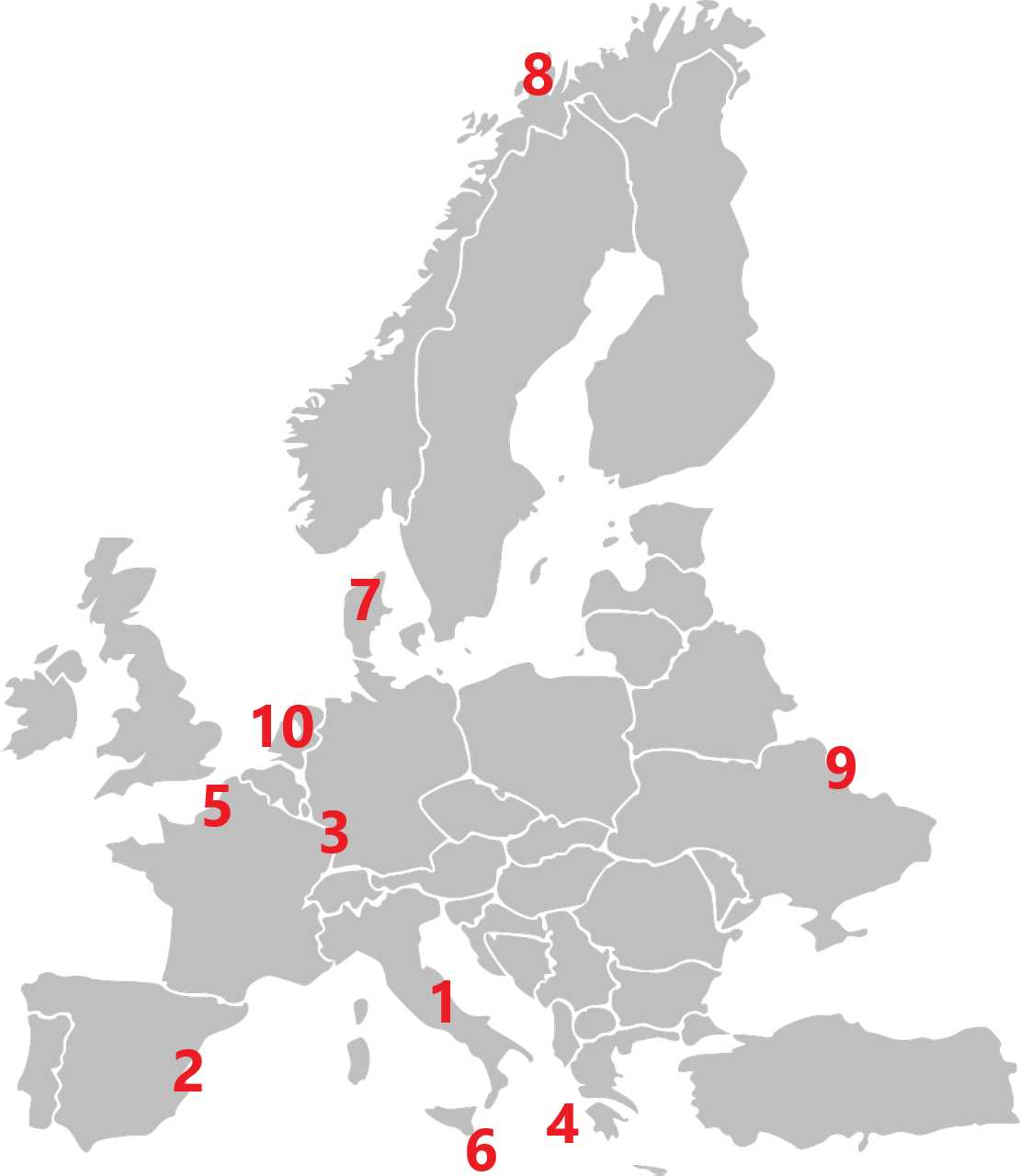
European Conflicts Trivia Quiz
During the 1930s and 1940s
The map marks some important events during the major conflicts of the mid twentieth century. All you need to do is match the location to the event. These are mostly from World War II.
A label quiz
by rossian.
Estimated time: 3 mins.
